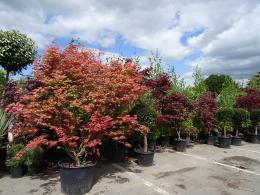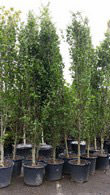Acer Palmatum Atropurpureum
1. Add items to basket
2. Go to the basket
3. Enter your postcode in Delivery Price Check
Plant shape: Bush
Pot size: 1.5 Litres
Plant ID: 14307 C 114
View plant size:LIMITED STOCK only 1 available
- then no more stock of this size
Plant shape: Freshly Potted
Pot size: 18 Litres
Plant ID: 4157 W 42
View plant size:LIMITED STOCK only 5 available
- then no more stock of this size
Plant shape: Bush
Pot size: 12 Litres
Plant ID: 15448 12
Plant shape: Bush
Pot size: 18 Litres
Plant ID: 5025 WC 42
View plant size:LIMITED STOCK only 1 available
- then no more stock of this size
Plant shape: Bush
Pot size: 20 Litres
Plant ID: 15763 2
View plant size:Plant shape: Mini Parachute
Pot size: 45 Litres
Plant ID: 15591 64
View plant size:Plant shape: Full standard
Trunk height: 1.8 cm
Trunk girth: 12-14 cm
Pot size: 50 Litres
Plant ID: 15168 100
View plant size:To check delivery cost add your plants to basket, then you can type your postcode in our Quick Delivery Price Check.
Acer Palmatum Atropurpureum is also known as Japanese Maple.
For many centuries Japanese gardeners have been developing cultivars from Japanese Acers found in Japan and also in China and Korea. Acer Palmatum Atropurpureum is one such cultivar, it is a faster growing variety of red acer. With wine red coloured leaves - including the new branches turning to bright red in autumn.
This Japanese Maple is a hardy deciduous tree which does best in partial shade and care should be taken to protect it from cold winds - this will burn the leaves.
Acer Palmatum Atropurpureum prefers a neutral to acidic well drained soil and it flowers between April to May, it achieves a max height of 4 metres and a spread of 2-3 metres. It is possible to grow in a large container but it is imperative to keep it well watered. Acers are slow growing and the maximum heights will generally take many years to achieve. Specimen Acers available from circa 7-9 years of age upwards. Other purple/red acers include acer palmatum dissectum garnet and acer palmatum tropenburg.
View our Blog post on Japanese Acers


















